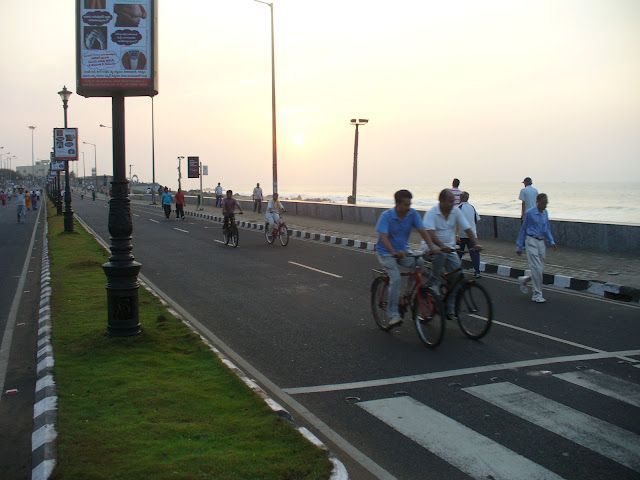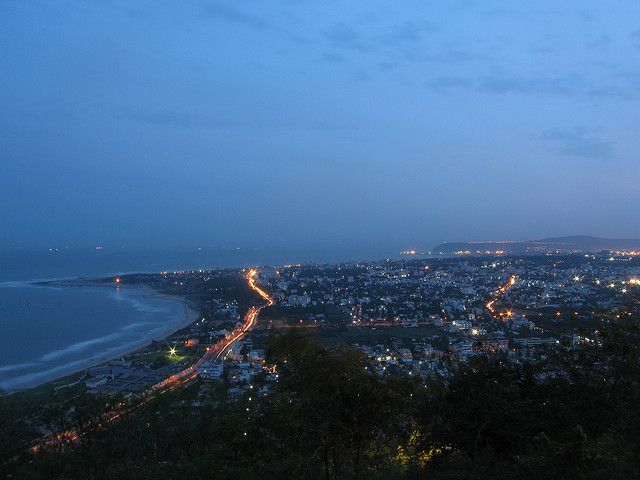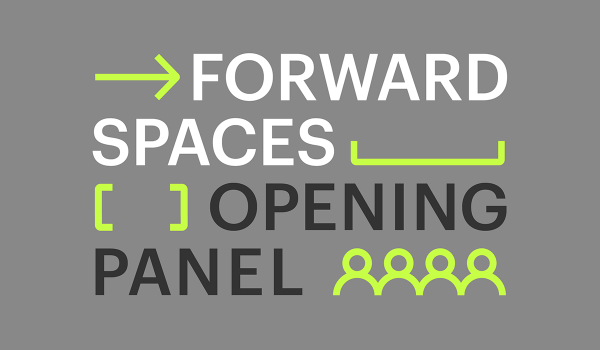This blog post is a part of the catalyzing new mobility program and receives support from The Rockefeller Foundation.
Vishakapatnam, a major port city on the southeast coast of India, recently introduced a successful “no motor vehicle” zone covering 20 kilometers of road from 5:30am to 7:30am, encouraging local residents to benefit from walking and cycling along the city’s picturesque coast. The Greater Vishakapatnam Municipal Corporation (GVMC) installed public bicycles, free for use along the corridor. Commissioner Sri B Ramanjaneyulu of the GVMC introduced this innovative program in November of last year to encourage community participation and create awareness about environmental management and pollution control. Several local residents use this time and space for meditation, as well.
The success of this initiative prompted the corporation to consider the implementation of a public bicycling system in downtown Vishakapatnam under the Jawaharlal Nehru National Urban Renewal Mission (JnNURM), a massive city modernization scheme. The commissioner is keen to build cycle tracks to improve infrastructure for cyclists and to introduce smartcards to aid ease of access. The docking stations would be strategically located at bus stops and railway stations, forming an integrated public transit system for the central part of the city. The city’s proposed 42-kilometer bus rapid transit corridor would also incorporate cycle tracks in its design.
Additionally, the corporation leads by example and observes a “no motor vehicle” day once per week when all employees, including the commissioner, come to work on bicycles or public transport. To create more space for the free cycling movement, GVMC has discouraged on-street parking and cleared cellar spaces in shopping malls for vehicle parking, instead.
With a population of over 1.4 million Vishakapatnam (also known as Vizag) is the third largest city, after Kolkata and Chennai, on the east coast of India. It is home to several state-owned heavy industries, a major steel plant and one of India’s largest seaports and oldest shipyard. It has the only natural harbor on the east coast of India. Like Mumbai on the west coast, Vizag started off as a small fishing village that later grew into an important port and a mega-industrial hub.
While Mumbai has experimented with car-free days in various sections of the city, with relatively successful outcomes, it has yet to implement a sustained effort at non-motorization that would positively influence walking and cycling. Mumbai has, in the past, had a public bicycling scheme, set up by two university student-entrepreneurs as part of a social entrepreneurship initiative. This pilot project was successful but was limited in its impact. Based on this model, however, the entrepreneurs are now setting up a similar scheme in the city of Pune.

A car-free coastal road in Vishakapatnam. Credit: TheCityFix
Creating a Transit Metropolis
Increasing urbanization and consequent motorization has created numerous problems for Indian cities. It has been projected that by 2050, Indian cities will have 700 million new residents. Increased motorization leads to environmental degradation, economic depletion and hazardous health conditions. According to a World Health Organization report, physical inactivity has been identified as the fourth leading risk factor for global mortality, influenced, in part, by unplanned urbanization. Studies have shown that physically active people have higher levels of health-related fitness than do people who are inactive, and just 30 minutes of moderate-to-intense activity five times per week can lower the risk of developing a number of disabling medical conditions and various chronic non-communicable diseases. Evidence also suggests that people who undertake regular exercise, five or more times a week, are more likely to integrate physical activity as part of their daily lifestyle, such as walking and cycling.
A GIZ module on transport and climate change states that CO2 emissions from transport have increased faster than those from all other sectors in the last 30 years. Coastal cities are especially at risk from the effects of climate change. Vishakapatnam’s small but scalable eco-friendly initiatives will improve the quality of life for local residents. The city of Mumbai has to grapple with its own unique set of infrastructural and geographical constraints, and use sustainable transport as a driver for urban development.
Using the principle of a “Transit Metropolis”, strategic investments in high quality, integrated public transit systems diminish the need for private vehicle use, wide roads and parking lots, leading to compact development that encourages non-motorized modes of transport like walking and cycling, doing away with unnecessary motorized trips.
















